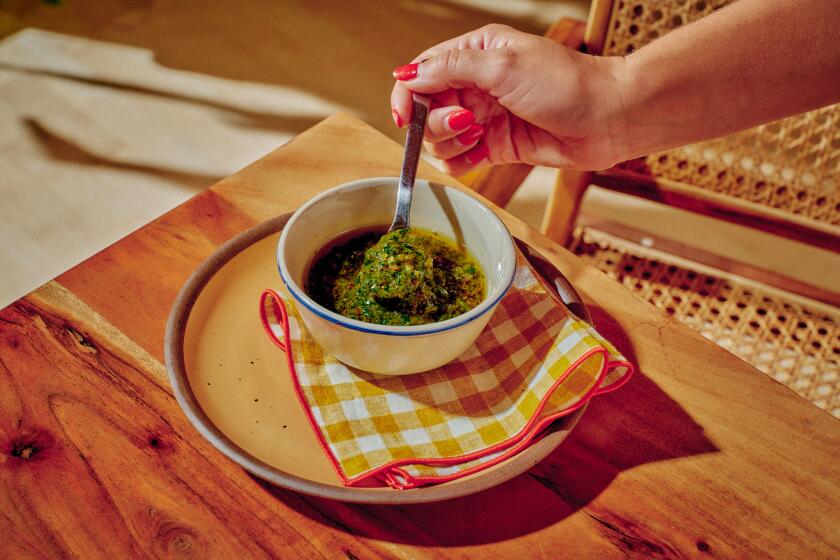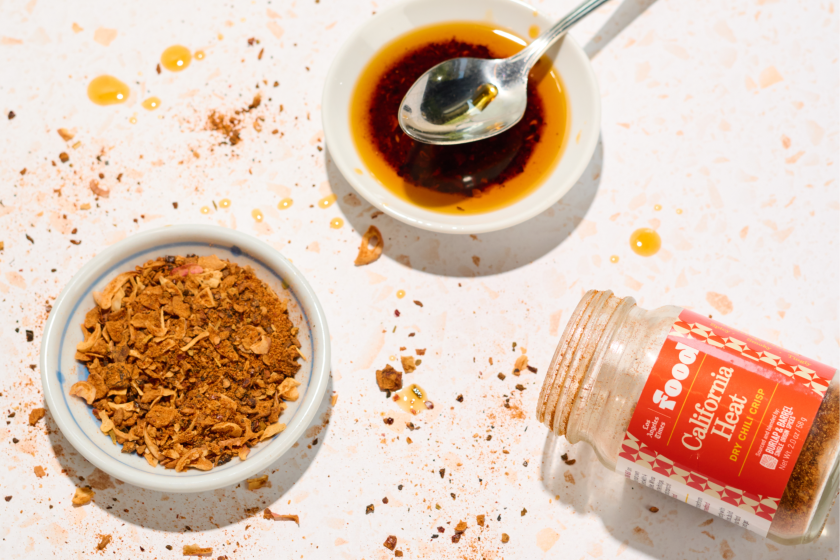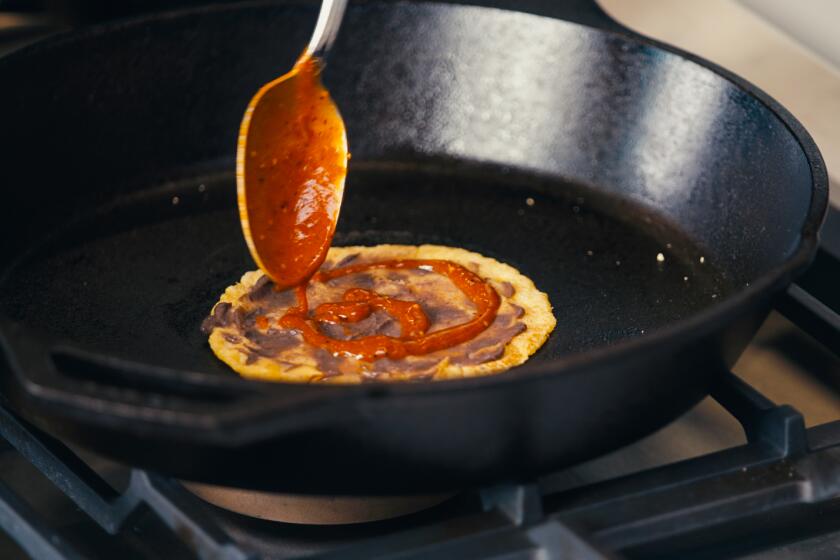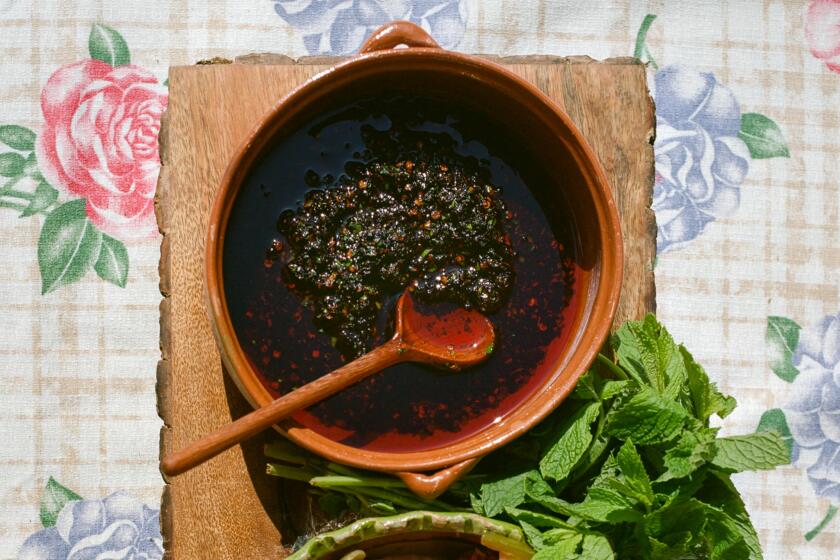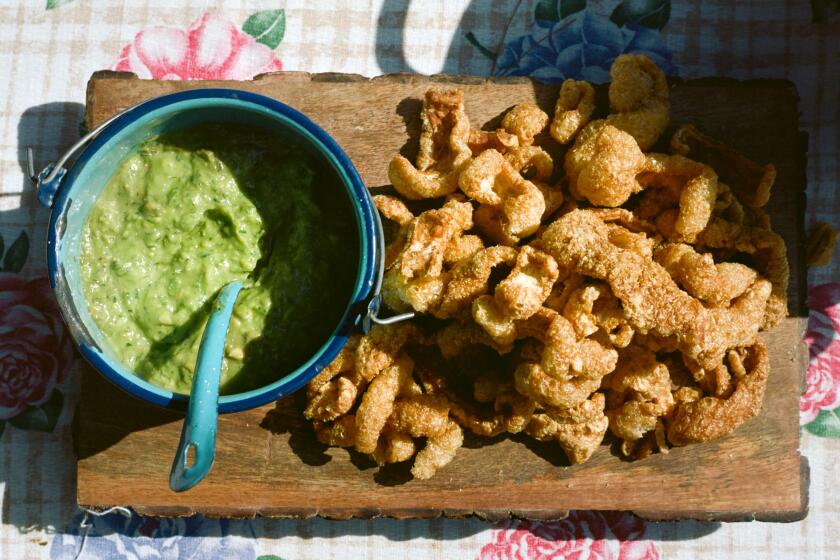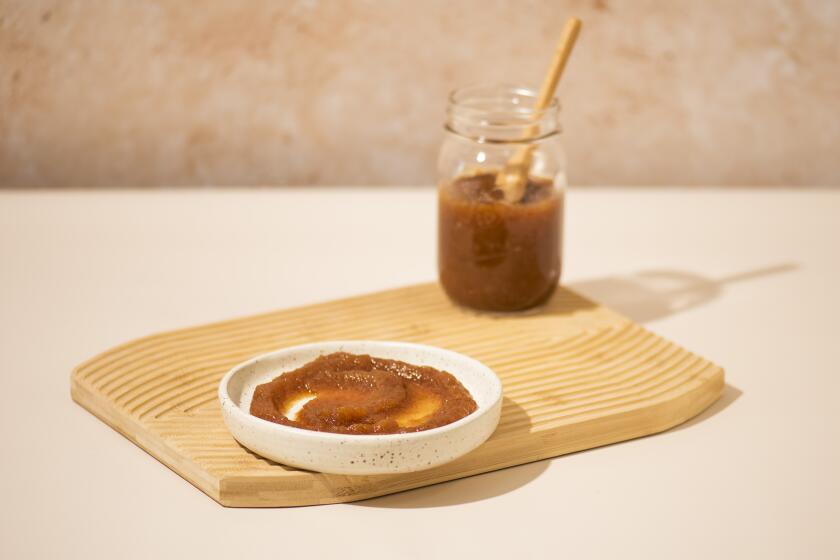Peach-pineapple ketchup
You’re probably wondering why I’m writing about ketchup. As many of you know, it is on the no-fly list in my Father’s Office restaurants. We don’t serve ketchup -- despite our famous burger and fries. The irony of this article is not lost on me either. But let’s not dwell on that. It’s hard to imagine our culture without tomato ketchup. It’s an embedded part of living in America. The drive-through without those little foil packets? Not in this lifetime. Every discarded, red-stained paper French fry basket is an indication of this country’s love affair with the beloved red bottle. It’s as American as American gets.
But despite ketchup’s rather humble reputation as the French fry’s best friend, the sticky sweet-and-sour red stuff is really well traveled and has quite the interesting little back story. And it doesn’t have to be made with tomatoes. In fact, many of my favorites aren’t. This isn’t some pointless DIY project, either. Homemade ketchups can serve so many culinary uses, not only on their own but also to boost the flavors of other sauces.
If you’ve got a backyard tree that’s overachieving, or if you got a little overenthusiastic buying fruit at the farmers market, all it will take is a big pot and an hour or so to make some really fascinating ketchup. Yes, fascinating.
So where did ketchup come from? Seems it originated in China. Originally a thin, brown, pickled and fermented fish-based sauce with added fruit that more resembled a funky soy sauce, the original ke-tsiap would probably destroy a perfectly good order of fries.
It then likely migrated south with Chinese settlers toward Malaysia and Indonesia, where, through linguistic derivation, it became known as kecap and ketjap, respectively. At this point, ke-tsiap probably underwent some more regional evolution, becoming a little thicker and a lot sweeter. This is likely the point where British and Dutch colonials fell in love with the dark, mysterious sauce and decided to bring it home with them.
Still, no tomatoes.
If all of this ketchup anthropology is starting to make sense, we need look no further than the tables of our local British pub to find what I believe to be its most direct relative (at least flavor-wise). “Exhibit A, your honor, I present HP Sauce.” Although commercial HP sauce technically started showing up on tables in Great Britain after Heinz, it tastes a lot like ketchup but looks browner. The similarity is uncanny. Sweet, sour, savory, thick, used on just about anything, and British. Hmm, I rest my case. Although it does contain some tomato, it primarily gets its flavor and color from dates and tamarind. Perhaps a result of trying to replicate those memories of Southeast Asia. (Incidentally, HP Sauce is now owned by Heinz. Coincidence? I think not.)
All of this tells us that the Europeans started tinkering with kecap/ketjap, experimenting with various ingredients while tuning the flavors to their own liking.
It wasn’t until those same colonials came ashore here in North America that we had our first ketchup sighting. Probably, the collision of the northward migration of the tomato plant from South America combined with the Indo/Chinese/British pickled fish and fruit concoction gave birth to our picnic table staple. Tomato ketchup was born and has since been on a globe-conquering mission that would probably humble the likes of Caesar and Khan.
At this point, ketchup would have more Facebook friends than Bieber.
Customized condiment
So let’s talk about how to make your own. No, not tomato ketchup. Save that for the drive-through. I’m talking about going back to the point in history when there was serious ketchup experimentation. Before ketchup got big and sold out.
The foundational flavors of ketchup are sweet and sour, the globally popular flavor duo that appears in every type of food -- a classic French gastrique, sweet and sour pork, Sweet Tarts, even Sour Patch Kids. You can run but you can’t hide from sweet and sour.
The warmer months are the perfect time to be thinking about making interesting alternative ketchups. The markets are flooded with amazing fruit now. Or you might have some fruit trees and are tired of making jam every year.
Ketchup is almost always a slow-simmered sauce typically containing fruit, vinegar and spices. The cooking method for ketchup is pretty straightforward. All you need is a big, covered stainless steel pot and a free afternoon. Make ketchup in big quantities if you can. Jars of homemade ketchup make nice gifts.
Begin by searching your pantry for those interesting vinegars you bought but never found a use for. Wine vinegars and malt vinegars work especially well. I tend to stay away from wood-aged vinegars such as balsamic because they can be so overpowering.
To my taste, most industrial ketchups tend to be too sweet. I think the best part of making your own is to be able to control that.
Industrial ketchups are generally made with corn syrup and lots of it. I prefer using palm sugar, agave nectar and cane sugar for my homemade versions. Sometimes I even combine different sugars for added complexity.
The health effects of corn syrup are being hotly debated right now. Let’s just say I’m not a big fan, and I much prefer the flavors of actual sugars. My personal favorites, palm and cane sugars, offer better mouth-feel and texture. I describe it as a fullness or roundness. Not just sweetness. Sort of like comparing sea salt to iodized salt. To me, corn syrup’s sweetness comes on too strong. No nuance. Perhaps a subtle difference, but no less important.
Flavors and uses
When picking up fruit at the farmers market, get a little extra and let the experimenting begin. Just remember, when using fresh fruits the preparation will be a little longer because it will take time to gently cook some of the water out of the fruit before you start adding other ingredients. Otherwise you will have very watery ketchup. I do like using fruit that’s quite ripe. I like the developed flavors of ripe fruit. It’s not like making jam. To me, it’s more like making a tomato sauce. Ripe is good.
Using dried fruits works very well if something is not in season or if you just want to save some time with prep work. In some cases, it works even better than fresh. Dried peaches, figs, apples, prunes and apricots all make great ketchups.
Beyond fried potatoes and burgers, ketchups can be used in so many interesting ways. One of my favorites is peach ketchup. I love to add it to chicken stock and mount it with a little butter for a delicious pan sauce to accompany a simple roast chicken.
Fig ketchup is spectacular with a platter of salty cured meats. Apricot ketchup made with fresh or dried fruit is exceptional when mixed with butter and used as a glaze on a pork roast as it exits the oven.
The possibilities are endless. Who knows, you might make something that goes well with fries.
Heat the oven to 350 degrees. Cut peaches in half and remove the pits, leaving the skin on. Cut the pineapple into 1-inch cubes.
Place the peaches cut side down on a sheet tray with either parchment or a silicone baking mat liner. Roast the peaches until the skin begins to crinkle, about 20 minutes. Remove the peach tray, and roast the pineapple cubes for 20 minutes.
Set the fruit aside to cool completely, then peel the peaches. Place the fruit in a food processor or blender and puree until smooth (this will need to be done in batches).
In a 6-quart (or larger) pot, combine the sugars and vinegar. Whisk the mixture over low heat until all of the sugar is dissolved. Add the mustard powder, onion powder, ginger powder and nutmeg and whisk to combine, then add the fruit puree and whisk until incorporated. Cook the mixture, uncovered, over low heat and whisk occasionally until thickened, about 25 minutes. The color will darken slightly. Season with the salt and set aside to cool completely.
Get our Cooking newsletter.
Your roundup of inspiring recipes and kitchen tricks.
You may occasionally receive promotional content from the Los Angeles Times.









